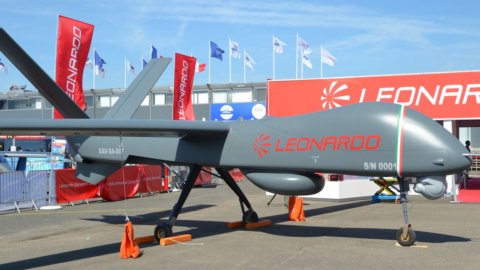Falco Xplorer, Leonardo's new remotely piloted aircraft, has successfully performed its first test flight. The drone took off from Trapani-Birgi airbase on January 15, flew over the Gulf of Trapani in dedicated airspace for about 60 minutes and finally returned to land safely. This is an important result, also achieved thanks to the technical and engineering support provided by the Flight Experimental Department of the AM in the flight planning phases and related activities.
The new Remotely Piloted Air System (RPAS), which combines features of persistence in flight for more than 24 hours with payload capacity up to 350 kg, will now begin a test campaign to evaluate the full range of capabilities of the aircraft, including the onboard sensor system. These tests will also certify the airworthiness, i.e. the flight suitability, of the Falco Xplorer based on the NATO STANAG 4671 standard, considerably expanding the territory over which the drone can operate. The Falco Xplorer was unveiled for the first time at last year's Paris Aerospace Show.
It has been designed to provide military and civilian customers with strategic surveillance capabilities and can be offered both as an integrated system and as a service fully managed and operated by Leonardo. With a maximum take-off weight of 1,3 tons and an operational altitude above 24.000 feet, the system is a valuable and effective tool for Intelligence Surveillance and Reconnaissance (ISR) missions. Further versions of the Falcon have been chosen by the United Nations and Frontex, the European border and coast guard agency. The design of the Falco Xplorer is based on operational feedback received from customers of the Falco family of aircraft.
The new system features a powerful suite of sensors made by Leonardo, which includes the T-80 Gabbiano multi-mode surveillance radar, the SAGE electronic intelligence system, an automatic identification device for maritime missions and an electro-optical turret. An optional hyperspectral sensor also allows for marine and environmental monitoring. The satellite link functionality allows operations beyond the line of sight and, thanks to an open architecture, third-party sensors can be easily integrated. Not subject to the restrictions of the International Traffic in Arms Regulations (ITAR) and compliant with the criteria for the Missile Technology Control Regime (MTCR) class II, the Falco Xplorer can be exported all over the world.




